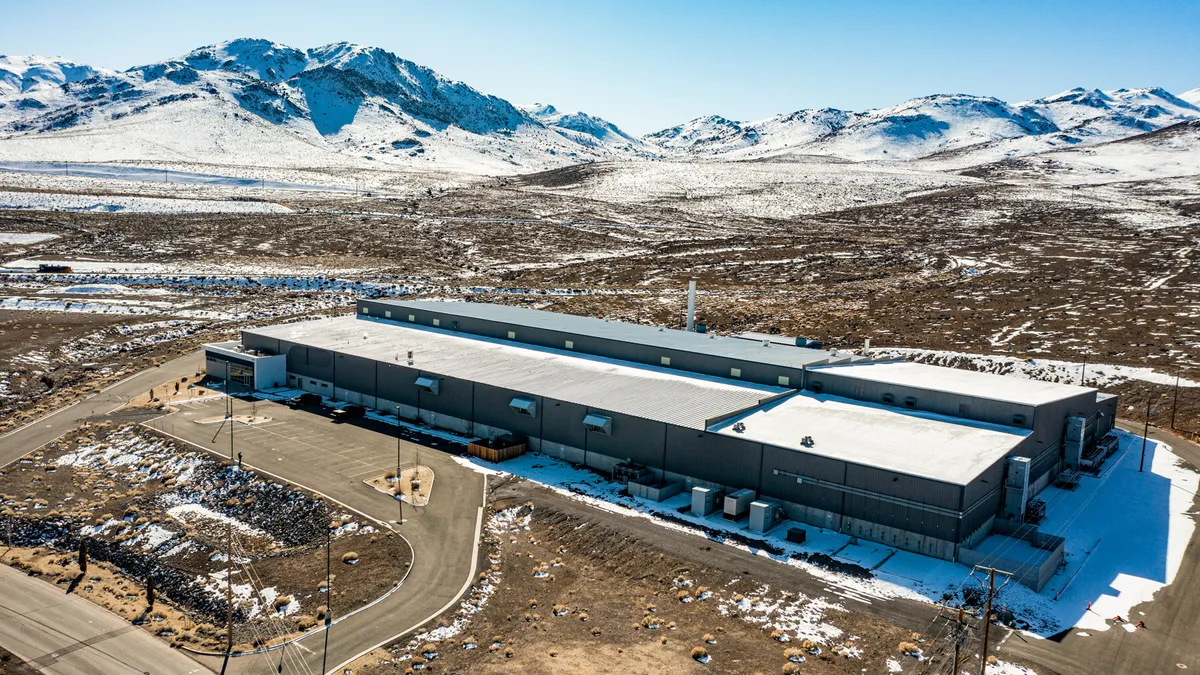The sharing economy is growing feverishly worldwide. Whether ride-sharing, tool-sharing or home-sharing, there are new value streams and new benefits to participants never before envisioned. Energy markets are no exception and are experiencing similar community-oriented revolutions.
Over a decade ago, the first community renewable energy (aka shared renewable energy) programs emerged, enabling multiple energy customers to participate in and share the economic benefits of a wind or solar energy system. Today, more than 14 states have enabled shared renewable energy programs, and hundreds of utilities offer some form of community or shared renewable energy program to their customers. More recently, “community choice aggregation” has sprung to life as a compelling alternative for communities looking to drive more renewable and clean energy development.
The latest community energy model to make waves: community storage. What is it? Where is it? To what extent is it, or could it be, “shared?” And, what can we expect from this new brand of community energy in the future? In this article, we explore the concept of community storage, provide an overview of projects and programs across the country, and offer some important insights on the challenges and opportunities for this novel concept.
What does community storage mean?
Community energy storage is currently a concept without a precise definition. It could be said that an energy storage system is community storage if it is (1) located within a community with defined boundaries, (2) serves such a community or (3) both of these things. This definition will tend to exclude bulk or utility-scale energy storage serving the utility and/or ratepayers as a whole, and singular, behind-the-meter (BTM) storage systems that primarily serve the building or home to which they are connected. In theory, anything between these two use cases could be community storage.
The California Public Utilities Commission (CPUC) has broadly defined community storage as storage connected at the distribution feeder level, associated with a cluster of customer load. The services these types of systems could provide include (1) capacity for excess generation from distributed energy resources (DERs), (2) integration of higher penetrations of intermittent renewable resources (through, e.g., power quality regulation and “smoothing”) or (3) backup power during outages.
Not to be confused as simply a microgrid (although storage on a microgrid would meet the broad definition above), community storage has at least four use cases recognized by the CPUC so far:
- Connected directly to the utility distribution grid at the distribution feeder, and operated by the utility for the purpose of distribution reliability;
- Individual BTM batteries in a geographic community, operated by the utility as a single unit during some hours of the day to provide bill management or local distribution grid services;
- In front of the meter (IFOM) within a community, operated to provide services to local customers;
- Behind a single meter serving a large campus or military base.
As several of the following examples demonstrate, any of the use cases described above could involve storage as a component of a community or shared solar project.
Community storage can theoretically encompass a wide range of storage technologies, including batteries and electric vehicles (EVs), as well as thermal storage such as ice storage, electric space heaters and water heaters. The examples discussed here mainly involve advanced battery technologies — lithium ion and other battery chemistries other than lead acid.
Where and how is community storage being used?
There are a range of views on what storage applications meet the definition of community storage, and as a result, today’s definition captures a variety of project types. The growing popularity of community solar may also contribute to the increased tendency to tout distributed storage projects as community storage. So it can be challenging to capture what the term means and where community storage is actually being used.
Today, most projects described by the use cases above are owned and/or operated by utilities. (For a discussion of what third-party- or customer-owned shared storage could look like, see the next section.) Community storage may be part of a utility-owned or operated community solar project. Even if the storage itself does not provide services to the community (e.g., backup power or energy time-shifting), it may complement the community solar by improving the power quality of renewable generation exported to the grid.
One of the first examples of a community solar program incorporating energy storage was in 2013 when the Minnesota-based Wright-Hennepin Electric Cooperative combined 40 kW of solar PV with 36 kW of batteries to enable the co-op to shift community members’ generation to the evening hours, when customer demand ramps up. And it potentially provided additional functions such as frequency regulation.
In 2014, Michigan investor-owned utility DTE Energy deployed multiple 500-kW batteries, including a battery integrated with solar PV at Monroe Community College, roughly 50 miles from Detroit. Storage locations were selected using a model that measured utility customer voltages to determine where batteries could best meet an existing need for voltage support. Under this arrangement, the utility could choose to operate each battery individually, or as a fleet, to serve voltage support, frequency regulation, peak load reduction and energy time-shifting functions.
In California, the Sacramento Municipal Utility District’s Anatolia III Solar Smart Homes Community project comprises 15 residential batteries (7.7 kWh BTM) connected with 2 kW of solar PV, as well as three larger community storage units, each shared among five to 10 homes. The applications include smoothing distributed PV generation and customer load profiles. Participants can monitor their daily electricity consumption and the amount of electricity exported to the grid. The customers of the SMUD-owned community batteries cannot control their function, and so do not have to concern themselves with any responsibilities of participation. As SMUD is the owner and operator of the systems, it leverages their benefits to the grid.
In Texas, municipal utility Austin Energy announced plans to install a pilot community solar-plus-storage project using an integrated control system. The multi-faceted project includes over 3.5 MW of community solar coupled with over 6 MWh of co-located storage and over a dozen additional batteries sited on commercial or residential properties. Much of the storage will be used for power quality and smoothing of renewable generation, while the individual batteries will be aggregated to provide direct customer benefits and other, utility-controlled functions.
In Illinois, the investor-owned utility Commonwealth Edison has also launched a pilot about 40 miles outside Chicago to test community storage’s ability to mitigate weather-related power outages in residential neighborhoods.
In Hawaii, investor-owned utility Hawaiian Electric Company will soon offer its community-based renewable energy program. Under this program, which will allow for solar-plus-storage on customer time-of-use rates, participants will be able to decide between a system owned and operated by the utility or a third party, which would control the battery and pass through the bill savings to the customer.
Most recently, Chicago-based SoCore Energy and United Power Cooperative announced plans to build a 4 MW, 16 MWh battery system in Firestone, Colorado, to help reduce commercial and industrial cooperative customers’ demand charges on their monthly bills. Like a community solar program, customers will subscribe to the program, but instead of getting credits for generated power, they will get credits to offset their peak demand.
Where permitted under current state regulations, the solar-plus-storage developer Sunverge is designing aggregated BTM storage units to be controlled either individually or as a fleet by a utility or third-party operator. After installation, the company acts as intermediary by translating data from the batteries to the operator, enabling the operator to control each battery for demand response, or the entire fleet – like a virtual power plant – to meet peak energy demand.
All of these applications fall within the definition of community storage, demonstrating the breadth in meaning of the term as used today.
Could a community storage device be shared by customers?
In states that have enabled shared solar programs, the majority of programs utilize electricity bill credits to distribute to customers the benefits of participation in a shared solar facility. Participation models vary, but generally speaking, customers may buy or lease a portion of the facility, or subscribe to a portion of the facility’s generation. In most states, third parties or customers manage the shared systems, though in some cases utilities may fill that role.
In theory, community storage could follow a similar mode. However, it may depend on the type of use case and services the storage is providing. Today, there are no available examples of energy storage projects operating alone as a shared customer asset, in the same way as shared solar operates, though there are some examples of shared solar-plus-storage, as discussed above.
Unlike solar PV, storage on its own does not itself generate electricity, rather it stores electricity for later use. While projects vary widely according to use case, many energy storage projects are set up to be controlled or dispatched by a utility or third party to achieve optimal value for the services it is capable of providing.
In addition, not all of the services energy storage is capable of providing are attributing value and/or can be monetized in all markets today. While a handful of innovative projects and programs exist, sharing a storage asset and allocating its benefits among a community of customers presents a new set of technical, economic and policy challenges that most markets have not tackled sufficiently to support widespread deployment of community storage.
The future of community storage
While there are only a handful of existing community storage projects, the quickly growing community solar market signals a future where community storage projects may be more prominent. Ultimately, though, if community storage is to realize widespread uptake, regulators and stakeholders will need to address the role of relevant state policies. Additional clarity is needed around the definition of community storage and how it fits into existing regulatory frameworks.
For example, if community storage is to provide multiple participants with economic benefits, the mechanism to distribute those benefits and/or electricity credits will likely need clarification. The CPUC recently took a step in this direction by clarifying the application of California’s virtual net metering tariff to solar-plus-storage systems. The process community storage systems are expected to undertake when seeking to connect to the grid is another key consideration for future market deployment.
Many rural electric cooperative utilities have adopted community or shared solar programs on behalf of their member-owners, and they may be particularly well positioned to adopt community storage programs, whether combined with shared solar or on their own. In addition, as wholesale markets continue to evolve to allow energy storage to participate and provide frequency regulation and other ancillary services, there could be more promise for community storage projects to generate shared revenue for their owners or subscribers through participation in wholesale markets.
One source of help can be found in a new Community Solar Value Project Toolbox, supported by the U.S. Department of Energy's Solar Market Pathways initiative and created by Extensible Energy with Cliburn & Associates and Navigant Consulting. The toolbox provides a suite of resources for utilities working to develop community solar. Specifically highlighted are important considerations and tools to help utilities evaluate value-added components to community solar programs, such as energy storage and demand response.
With the deployment of these new resources, and lessons learned from the existing projects and programs, the seeds of community storage may begin to grow in new markets over the coming years.
Joseph “Seph” Petta and Erica McConnell are attorneys for the Interstate Renewable Energy Council through Shute, Mihaly & Weinberger, LLP





















